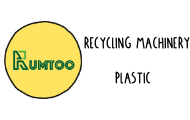Despite the progress made in plastic recycling in Europe, there are several shortcomings that need to be addressed to further improve recycling rates and achieve a circular economy for plastics.
- Inconsistent Recycling Practices: Recycling practices vary widely across Europe, with some countries achieving high recycling rates while others lag behind. This inconsistency can be attributed to differences in recycling infrastructure, regulations, and public awareness1.
- Quality of Recycled Plastic: While mechanical recycling is the most common method of plastic recycling in Europe, it often results in plastic that is of lower quality than virgin plastic. This can limit the applications of recycled plastic and reduce its market value2.
- Limited Range of Recyclable Plastics: Not all types of plastic are currently recyclable. Some plastics, such as multi-layered plastics and certain types of plastic film, are difficult to recycle and are often sent to landfill or incinerated3.
- Economic Viability: The economic viability of plastic recycling is a significant challenge. The cost of collecting, sorting, and recycling plastic waste can be high, and the price of recycled plastic often struggles to compete with virgin plastic, especially when oil prices are low4.
- Consumer Behavior: While awareness of the importance of recycling is growing, not all consumers recycle their plastic waste effectively. Misplaced items and contamination of recyclable materials can reduce the efficiency of the recycling process and the quality of the recycled plastic4.
Addressing these shortcomings will require a concerted effort from all stakeholders involved in the plastic value chain, from manufacturers and consumers to waste management companies and policymakers. With the right strategies and investments, these challenges can be overcome, paving the way for a more effective and efficient plastic recycling industry in Europe.
Återgivning är inte tillåten utan tillstånd.:Rumtoo Maskiner » De nuvarande bristerna med plaståtervinning i Europa

 Rumtoo Maskiner
Rumtoo Maskiner Fråga nu
Fråga nu 
